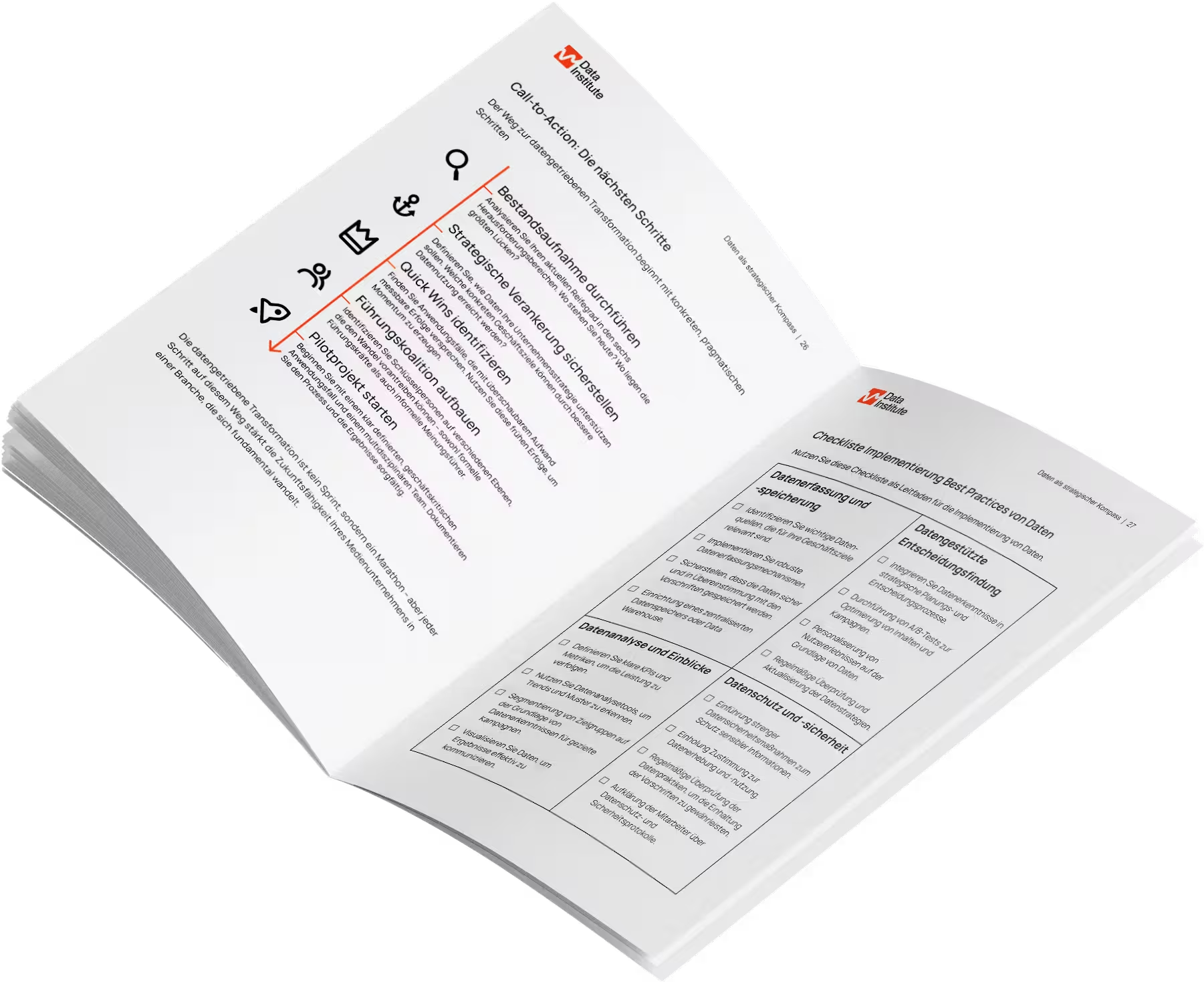Customer lifetime value simply explained.


The roadmap for data-driven transformation
The ePaper shows you strategies, success stories and a checklist for a direct start into the digital future.

- Das ist eine H2
- Das ist eine H3
The Customer Lifetime Value (CLV) describes the total revenue that a customer generates over the entire duration of their relationship with a company. It shows not only the current value of a customer, but also the potential growth that can be achieved through strong customer loyalty. This makes CLV an important benchmark for recognizing the value of customer relationships and making strategic marketing decisions.
Why is CLV so important?
CLV is more than just a number. It shows you how to develop successful marketing and a solid business strategy. If you know how much money your customers bring you over time, you can:
Make better decisions: You know which customers you should particularly care for and where to use your marketing budget most effectively.
Strengthen customer loyalty: With targeted promotions and offers for your most valuable customers, you can strengthen their loyalty.
Optimize marketing campaigns: You can better measure and adjust how successful your campaigns are.
Promote sustainable growth: By focusing on the needs of your most valuable customers, you build a solid foundation for your business.
Challenges when calculating CLV
Calculating CLV is often not easy in practice. A key challenge is that Accurately predict customer lifespan. Many factors, such as market changes, customer preferences and external influences, make it difficult to reliably determine the duration of the customer relationship. It can also be complex to include indirect effects such as word of mouth and customer recommendations on CLV.
How do I calculate CLV?
The formula for CLV may look complicated at first glance, but it is actually very simple:
CLV = Average revenue per customer * Number of purchases * Customer lifeduration - Customer Aquisition Costs
Let's take our regular customer from the bookstore. He spends an average of €20 per visit and comes 52 times a year. If he remains loyal to you for five years, his CLV (excluding acquisition costs) is 5,200€.
Limits of CLV and potential pitfalls
Although the CLV is a valuable tool, it also has its limits. It is based on assumptions about future customer loyalty and buying behavior, which may prove to be inaccurate. Another pitfall is focusing on the highest-rated customers — this could lead to neglecting potentially valuable new customers and emerging customers. Seasonal fluctuations or special promotions can also influence CLV and should be taken into account when interpreting.
The versatility of CLV: examples from other industries
CLV is not only relevant in retail or e-commerce. For example:
Banks and insurance companies: Customers who use multiple products such as current accounts, credit cards and insurance usually have a higher CLV. A bank could develop targeted up-selling strategies to increase this value by offering additional savings products or loans.
Gyms: Members who regularly make personal training bookings or take part in special courses in addition to their basic contract also have a higher CLV. Through targeted incentives and personalized training offers, these customers can be tied even more closely to the studio.
Modern technologies and data analysis for CLV optimization
Thanks to modern data analysis tools and artificial intelligence, the calculation and use of CLV is becoming increasingly precise and effective. Machine learning algorithms can analyze customer data in real time to make precise predictions about future customer behavior. In this way, targeted measures can be developed to maximize CLV and further increase customer loyalty.
Conclusion
Customer lifetime value is a valuable indicator that helps you understand your customers better and develop your business sustainably. Use CLV to develop tailored strategies for your most valuable customers.
Apply the CLV concept in your company and discover the potential of your customer relationships for long-term success!

Stay up to date
Just follow us on LinkedIn.
Stay up to date
Just follow us on LinkedIn.

Stay up to date
Just follow us on LinkedIn.

Related case studies
There are suitable case studies on this topic
Which services fit this topic?

Interest in receiving regular news in your inbox
Just subscribe to our newsletter.
Interest in receiving regular news in your inbox
Just subscribe to our newsletter.

Interest in receiving regular news in your inbox
Just subscribe to our newsletter.



